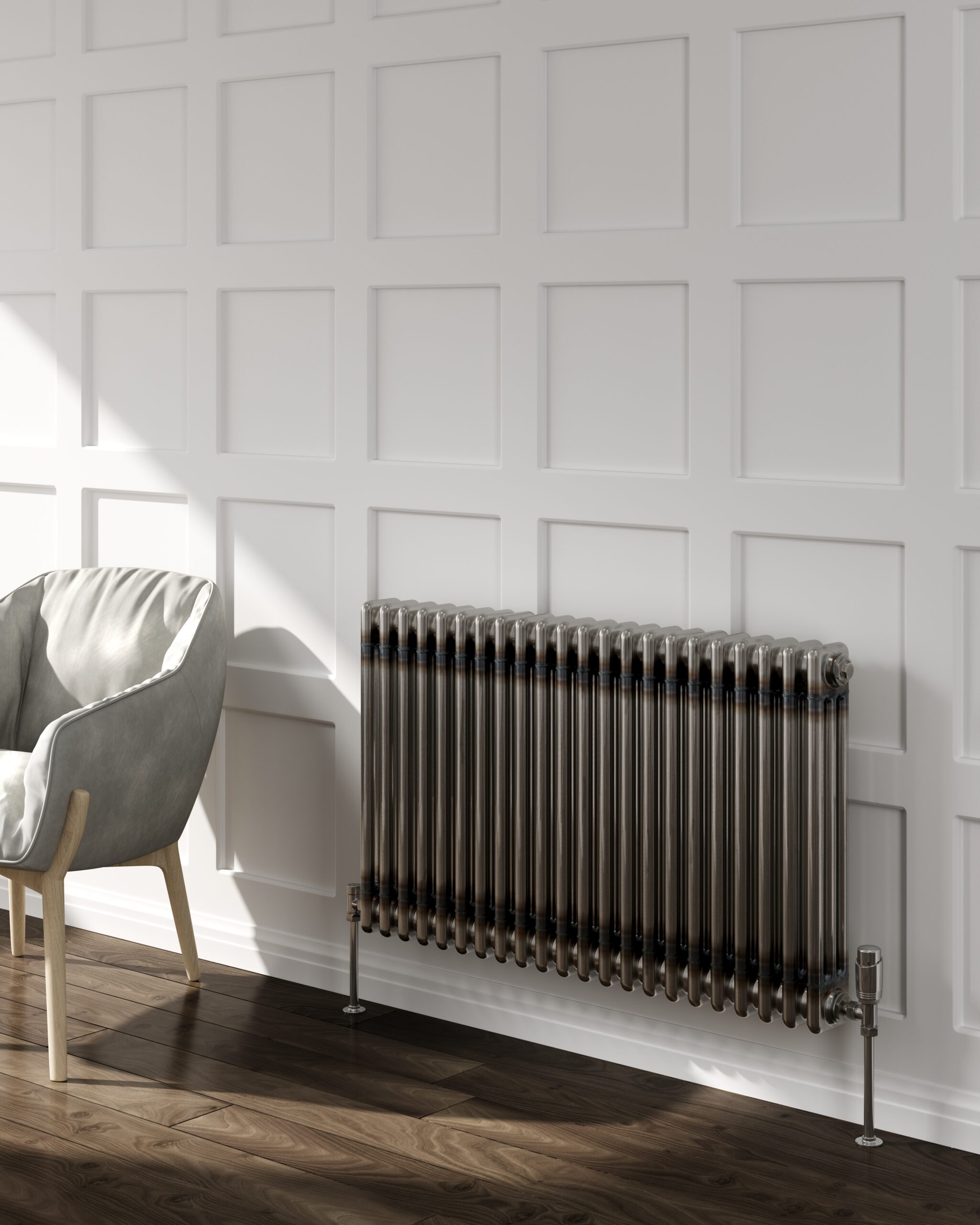Practical Guide: How to Drain a Radiator with Ease

How to Drain a Radiator with Ease
Draining a radiator is an essential maintenance task that ensures the efficiency and longevity of your heating system. In this comprehensive guide, we will provide you with step-by-step instructions on how to drain a radiator effectively.
By following these simple tips, you can easily complete the radiator drain process and keep your heating system running smoothly.
Key Takeaways:
- Regularly draining your radiator is crucial for optimal performance and efficiency.
- Accumulated debris and sludge can reduce your radiator’s efficiency and cause clogs.
- Ensure you have the necessary tools and materials before starting the draining process.
- Prioritize safety by turning off the heating system and allowing it to cool down before draining.
- Properly dispose of the drained radiator fluid as it may contain harmful chemicals.
Why Should You Drain Your Radiator?
Regular maintenance is crucial for the optimal performance of your heating system, and draining your radiator is an essential part of that maintenance routine. Over time, sludge and debris can accumulate inside the radiator, affecting its efficiency and heat distribution.
By regularly draining the radiator fluid and removing any accumulated debris, you can improve the overall performance of your radiator.
When the radiator is clogged with sludge, it struggles to heat up properly, resulting in uneven heating throughout your home.
This not only affects the comfort levels but also increases energy consumption, leading to higher utility bills. By draining the radiator and ensuring a clean interior, you can enhance heat distribution, reduce energy wastage, and ultimately save money in the long run.
Additionally, a clean radiator helps prevent clogs in the heating system. The accumulated sludge can find its way into other components, such as pipes and valves, causing blockages and potential damage. By regularly draining the radiator, you can minimize the risk of clogs, preserving the integrity of your heating system and avoiding costly repairs.
Radiator maintenance tips: Draining your radiator regularly helps improve heat distribution, reduce energy consumption, and prevent clogs in the heating system.
| Benefits of Draining Your Radiator | Actions |
|---|---|
| Improved heat distribution | Regularly draining the radiator helps remove debris and sludge, ensuring efficient heat distribution throughout your home. |
| Energy savings | By enhancing the radiator’s performance, you can reduce energy consumption and lower your monthly heating bills. |
| Prevents clogs | Draining the radiator helps prevent the accumulation of sludge in the heating system, reducing the risk of clogs and potential damage. |
| Extended lifespan | Regular maintenance, including draining the radiator, can prolong the lifespan of your heating system by preventing issues and preserving its efficiency. |
Tools and Materials Needed
Before you begin to drain your radiator, it’s essential to gather the necessary tools and materials. Having everything prepared beforehand will ensure a smooth and efficient draining process. The following items are required for this procedure:
- Radiator key or a screwdriver (depending on the type of radiator valve)
- Towel or bucket to catch any water
- Container to collect the drained radiator fluid
- Protective gloves
The radiator key or screwdriver is crucial for accessing the valve that controls the flow of fluid. The towel or bucket will help you contain any water that may spill during the draining process. The container for the drained fluid is necessary for disposal purposes. It’s important to wear protective gloves to prevent any contact with hot radiator surfaces or the coolant, ensuring your safety throughout the procedure.
Having these tools and materials ready will save you time and ensure that you can complete the radiator draining process without any interruptions or delays.
| Tool/Material | Description |
|---|---|
| Radiator Key or Screwdriver | Used to access the radiator valve |
| Towel or Bucket | To catch any water and prevent spills |
| Container | To collect the drained radiator fluid |
| Protective Gloves | To ensure safe handling of the radiator and coolant |
Safety Precautions to Consider
When it comes to draining the coolant from your radiator, safety should always be your top priority. Follow these important precautions to ensure a smooth and accident-free process:
1. Turn off the Heating System
Before you begin draining the radiator coolant, it is crucial to turn off the heating system and allow it to cool down completely. This will prevent any potential burns from hot coolant and ensure a safer working environment.
2. Wear Protective Gear
When handling the radiator and the coolant, it is advisable to wear protective gloves and clothing to avoid any direct contact with the hot surfaces or the coolant itself. This will provide an additional layer of safety and minimize the risk of burns or skin irritation.
3. Consult a Professional if Uncertain
If you encounter any complexities or uncertainties during the draining process or if you are unsure of any step, it is always wise to seek assistance from a professional. They can provide expert guidance and ensure that the task is completed safely and efficiently.
By following these safety precautions, you can mitigate potential risks and complete the radiator draining process with confidence and peace of mind.
Table: Safety Precautions for Draining Radiator Coolant
| Precautions | Description |
|---|---|
| Turn off the Heating System | Ensure the heating system is switched off and cooled down before starting the process. |
| Wear Protective Gear | Protect your hands and body by wearing gloves and appropriate clothing. |
| Consult a Professional if Uncertain | Seek expert advice if you are unsure about any step or encounter complexities. |
Step-by-Step Guide to Draining a Radiator
Draining a radiator may seem like a daunting task, but with the right steps, it can be completed easily. Follow this step-by-step guide to effectively drain your radiator:
Step 1: Prepare the Area
Before you begin, ensure that you have a towel or bucket to catch any water that may leak during the process. It’s also a good idea to wear protective gloves to avoid contact with hot surfaces or coolant. Safety should always be a priority.
Step 2: Turn Off the Heating System
Make sure that your heating system is turned off and has had sufficient time to cool down. This will prevent any potential burns from hot coolant. Safety always comes first.
Step 3: Locate the Radiator Valve
Locate the radiator valve, which is usually situated at the bottom of the radiator. The valve may require a radiator key or a screwdriver to open. Be careful not to damage or force the valve as it may lead to leaks.
Step 4: Open the Radiator Valve
Using a radiator key or a screwdriver, slowly open the radiator valve. Keep a container nearby to collect the drained radiator fluid. Allow the fluid to drain completely before proceeding to the next step.
Step 5: Collect the Drained Fluid
Carefully collect the drained radiator fluid in a container. Remember to handle the fluid with caution, as it may contain harmful chemicals. Be mindful of proper disposal methods, as discussed in the next section.
Step 6: Close the Radiator Valve
Once all the fluid has been drained, close the radiator valve tightly. This will prevent any leaks or airlocks from occurring when you refill the radiator.
Step 7: Dispose of the Drained Fluid Responsibly
Properly disposing of the drained radiator fluid is crucial to protect the environment. Contact your local authorities or a waste disposal company for guidance on how to dispose of the coolant responsibly. Avoid pouring it down the drain, as it can contaminate water sources.
Step 8: Refill the Radiator
After draining the radiator, it’s time to refill it with fresh water or a coolant mix. Follow the manufacturer’s instructions for the optimal coolant-to-water ratio. Slowly open the radiator valve to allow the new fluid to fill the radiator, ensuring there are no airlocks. Once the radiator is filled, close the valve tightly.
Step 9: Bleed the Radiator
To ensure proper circulation, it’s important to bleed any trapped air from the radiator. Locate the bleed valve, typically positioned at the top of the radiator. Use a radiator key or a screwdriver to open the valve slightly until you hear a hissing sound. Once no more air bubbles escape, close the valve tightly.
Step 10: Test the System
Turn on your heating system and check if all the radiators are heating up properly. If you notice any issues, such as cold spots or uneven heating, it may be necessary to seek further inspection or maintenance.
By following these steps, you can successfully drain your radiator and maintain the efficiency of your heating system.
Disposing of the Drained Fluid
Properly disposing of the drained radiator fluid is essential to protect the environment and prevent contamination of water sources. The fluid may contain harmful chemicals, so it should never be poured down the drain or discarded in regular household waste. It’s important to follow the appropriate disposal methods recommended by your local authorities or a waste disposal company. They can provide guidance on the safe and responsible disposal of the coolant.
To ensure eco-friendly disposal, consider taking the following steps:
- Check with your local authorities or waste disposal company for specific guidelines on disposing of radiator fluid.
- If there are designated collection points for hazardous waste in your area, consider taking the fluid to these facilities.
- If no collection points are available, consult with a professional waste disposal company for their assistance.
Remember, improper disposal of radiator fluid can have serious environmental consequences. Taking the time to dispose of it responsibly is an important step in maintaining a cleaner and safer environment for everyone.
Table: Recommended Methods of Disposing Radiator Fluid
| Disposal Method | Advantages | Disadvantages |
|---|---|---|
| Local Collection Points | – Convenient and regulated disposal – May be free of charge or minimal cost |
– Limited locations and operating hours – May require transportation |
| Professional Waste Disposal | – Expert guidance and safe handling – Ensures compliance with regulations |
– Cost may be involved – Requires coordination with waste disposal company |
By following the appropriate disposal methods, you can contribute to environmental sustainability and help protect both the local ecosystem and water resources from contamination.
Radiator Refilling: Essential Tips for Proper Maintenance
Refilling the radiator is a crucial step in maintaining the efficiency of your heating system. By following the manufacturer’s instructions and using the right coolant-to-water ratio, you can ensure optimal performance and heat distribution. Here are some essential tips to help you with the radiator refilling process:
Gather the necessary materials:
- Radiator key or screwdriver
- Towel or bucket
- Container for collecting drained fluid
- Protective gloves
- Fresh water or coolant mix
Having these materials ready before starting the refilling process will make the task more efficient and prevent any unnecessary delays or interruptions.
Slowly open the radiator valve:
Once you have the radiator refilling materials ready, slowly open the radiator valve to allow the fresh water or coolant mix to fill the radiator. This should be done gradually to avoid any potential overflow or airlocks in the system. Keep a close eye on the level of fluid as you refill and ensure there are no leaks or spills.
Close the valve tightly:
After filling the radiator, it’s important to close the valve tightly to prevent any leakage or loss of fluid. A properly sealed valve will ensure the efficient operation of the heating system and prevent any air from entering the radiator, which can affect its performance.
| Tip | Properly sealing the radiator valve is essential to prevent any leaks or loss of fluid. |
|---|
Radiator Bleeding: Ensuring Proper Circulation for Optimal Performance
Bleeding your radiator is a vital step in maintaining the efficiency of your heating system. Over time, air can become trapped inside the radiator, hindering proper circulation and reducing its effectiveness. By following these radiator maintenance tips, you can effectively bleed your radiator and ensure optimal performance.
Why Bleeding Your Radiator Is Important
When air becomes trapped within the radiator, it forms an obstruction that prevents hot water from flowing freely. This leads to cold spots on the radiator and uneven heating in your home. By bleeding the radiator, you release the trapped air, allowing hot water to circulate efficiently and evenly. This results in a more effective heating system and improved comfort in your living space.
Step-by-Step Guide to Bleeding Your Radiator
Follow these simple steps to bleed your radiator and enhance its performance:
- Turn off your heating system and allow the radiator to cool down completely.
- Locate the bleed valve at the top of the radiator. It is usually a small square or hexagonal nut.
- Cover the surrounding area with a towel or bucket to catch any water that may be released.
- Using a radiator key or a screwdriver (depending on the valve type), slowly turn the bleed valve anticlockwise. You should hear a hissing sound as the trapped air escapes.
- Once the hissing stops and water starts to trickle out, tighten the bleed valve clockwise to close it.
- Wipe away any spilled water and ensure the area is dry.
- Repeat this process for all radiators in your home.
By regularly bleeding your radiators, especially before the cold winter months, you can ensure the efficient operation of your heating system and maintain a comfortable indoor environment. Remember to exercise caution when dealing with hot surfaces and consult a professional if you encounter any difficulties or complex issues.
| Benefits of Bleeding Your Radiator | Considerations |
|---|---|
| Improved heating performance and efficiency | Avoid over-tightening the bleed valve to prevent damage |
| Elimination of cold spots on radiators | If air continues to enter the system, consult a professional |
| Even heat distribution in your living space | Ensure the heating system is turned off before bleeding the radiator |
Radiator Maintenance Tips
Proper radiator maintenance is crucial for keeping your heating system in optimal condition. Once you have completed the draining, refilling, and bleeding process, it’s essential to check for any leaks. Inspecting the radiator and connections for signs of leaking coolant is an important step in ensuring the efficiency and longevity of your heating system.
Checking for Leaks
After completing the radiator maintenance process, carefully inspect the radiator and all connections for any signs of leaks. Look for puddles of coolant or damp areas around the radiator and pipes. Leaking coolant can indicate loose connections or other issues that may need to be addressed. If you notice any leaks, it’s important to tighten the connections or seek assistance from a professional to resolve the issue promptly.
Performing a Pressure Test
In addition to visually inspecting for leaks, you can also perform a pressure test to ensure there are no hidden leaks in the radiator or heating system. This test involves pressurizing the system and checking for any drop in pressure over time. A pressure testing kit can be purchased or rented from a hardware store, or you can hire a professional to perform the test for you. Identifying and fixing any leaks will help maintain the efficiency and effectiveness of your radiator.
Regular Maintenance
Checking for leaks should be incorporated into your regular radiator maintenance routine. It is recommended to inspect the radiator and connections at least once a year or as advised by the manufacturer. Regular maintenance will allow you to identify and address any issues promptly, preventing further damage and ensuring that your heating system operates at its best.
| Benefits of Checking for Leaks | Importance of Regular Maintenance |
|---|---|
| Prevents wasted energy and reduces energy bills | Ensures optimal performance and heat distribution |
| Identifies potential issues before they become major problems | Prolongs the lifespan of your radiator |
| Prevents coolant leaks that can damage surrounding areas | Protects your investment in the heating system |
Radiator Maintenance Tips
Once you have completed all the steps to drain and refill your radiator, it’s important to test the heating system to ensure everything is working effectively. Follow these tips to test your heating system and identify any potential issues:
Step 1: Turn on the Heating
Start by turning on the heating system and setting it to a comfortable temperature. Allow some time for the system to warm up and for the heat to reach all the radiators in your home.
Step 2: Check for Uneven Heating
Walk around your home and carefully observe each radiator to see if they are heating up evenly. Feel the temperature of each radiator to ensure there are no cold spots or areas that are significantly cooler than others. If you notice any inconsistencies, it may indicate an issue with the radiator or the heating system.
Step 3: Listen for Strange Noises
While the heating system is running, listen for any unusual noises such as banging, hissing, or gurgling sounds. These noises could indicate air pockets or water flow issues within the system. If you hear any concerning sounds, it’s advisable to consult a professional for further inspection and maintenance.
By testing your heating system after draining and refilling your radiator, you can ensure that it is functioning optimally and providing adequate heat distribution throughout your home.
| Test | Procedure |
|---|---|
| Check for Even Heating | Observe each radiator for uniform heat distribution, feeling for any cold spots |
| Listen for Strange Noises | Pay attention to any unusual sounds coming from the heating system |
Radiator Maintenance Tips: Regular Maintenance and Frequency
Regular maintenance is key to keeping your radiator in optimal condition and prolonging its lifespan. By including radiator maintenance as part of your yearly routine, you can ensure the efficient functioning of your heating system. Here are some essential tips to help you maintain your radiator:
1. Draining and Flushing
Draining and flushing your radiator should be done at least once a year or as recommended by the manufacturer. This process helps remove any sludge or debris that may have accumulated in the system, improving heat distribution and preventing clogs. Refer to our step-by-step guide on how to drain a radiator effectively.
2. Bleeding the Radiator
Bleeding your radiator is crucial for removing any trapped air that may hinder proper circulation. Airlocks can cause cold spots and reduce the effectiveness of your radiator. Use a radiator key or screwdriver to open the bleed valve slightly until you hear a hissing sound. Once no more air bubbles escape, close the valve tightly.
3. Checking for Leaks
Regularly inspect your radiator and connections for any signs of leaking coolant. Leaks can lead to inefficiency and potential damage to your heating system. If you notice any leaks, tighten the connections or seek professional assistance to rectify the issue promptly.
Remember, safety is paramount when performing radiator maintenance. Always ensure that your heating system is turned off and cooled down before starting any maintenance tasks. Additionally, dispose of the drained radiator fluid responsibly and in accordance with local regulations. By following these maintenance tips, you can keep your radiator in top shape and enjoy a comfortable, energy-efficient home.
| Radiator Maintenance Tips |
|---|
| Drain and flush your radiator at least once a year |
| Bleed the radiator to remove trapped air |
| Regularly check for leaks in your radiator and connections |
Conclusion
Draining a radiator is a vital part of maintaining an efficient heating system. By following the step-by-step guide provided, you can easily complete the radiator drain process and ensure optimal heat distribution in your home. It is important to prioritize safety throughout the procedure and dispose of the drained fluid responsibly.
Regular maintenance, including radiator draining, will help prolong the lifespan of your heating system and save you money on energy bills. Remember to consult the manufacturer’s recommendations and drain your radiator at least once a year. By incorporating this simple task into your routine, you can enjoy a comfortable and well-functioning heating system for years to come.
Thank you for reading our practical guide on how to drain a radiator. We hope you found it informative and helpful. If you have any further questions or need assistance with your heating system, do not hesitate to consult a professional. Stay warm and cosy!
FAQ
Why is draining a radiator important?
Draining a radiator is essential for maintaining optimal performance. It helps remove sludge and debris that can accumulate over time, improving heat distribution and preventing clogs in the system.
What tools and materials do I need to drain a radiator?
You will need a radiator key or a screwdriver (depending on the type of radiator valve), a towel or bucket to catch any water, a container to collect the drained radiator fluid, and protective gloves to prevent contact with hot surfaces or the coolant.
How often should I drain my radiator?
It is recommended to drain your radiator at least once a year or as advised by the manufacturer for regular maintenance.
How do I dispose of the drained radiator fluid?
The drained radiator fluid should be disposed of properly as it may contain harmful chemicals. Check with your local authorities or a waste disposal company for guidance on responsible disposal. Do not pour it down the drain.
How do I refill the radiator after draining?
Refilling the radiator involves adding fresh water or a coolant mix. Follow the manufacturer’s instructions for the optimal coolant-to-water ratio. Slowly open the radiator valve to allow the new fluid to fill the radiator, ensuring there are no airlocks.
How do I bleed the radiator?
To bleed the radiator, locate the bleed valve usually situated at the top of the radiator. Use a radiator key or a screwdriver to open the valve slightly until a hissing sound is heard. Close the valve tightly once no more air bubbles escape.
How do I check for leaks after draining the radiator?
After completing the draining process, inspect the radiator and connections for any signs of leaking coolant. If you notice any leaks, tighten the connections or seek assistance from a professional.
How do I test the heating system after draining the radiator?
Turn on the heating and ensure that all radiators are heating up properly. If there are any issues, such as cold spots or uneven heating, it may indicate a problem that requires further inspection or maintenance.
How often should I perform radiator maintenance?
Regular maintenance, including draining the radiator, should be done at least once a year or as advised by the manufacturer to keep the system running efficiently.
Is draining a radiator a difficult task?
Draining a radiator is a simple maintenance task that can be easily done by following the step-by-step guide provided. However, if you are unsure or if there are complexities in your heating system, it’s wise to consult a professional.
Upgrade Your Home’s Comfort with our best Radiators
Invest in long-lasting warmth and energy savings with our top-selling, affordable radiators. We offer reliable models to fit any budget and heating needs – no more cold spots or high bills. Check your eligibility for government heating grants, and let us help you create a cosier home while reducing your environmental impact.
Contact our team today to find the perfect, energy-efficient radiator solution. We’ll ensure you get the right size, output and features to maximize savings and comfort this winter and for years to come.




